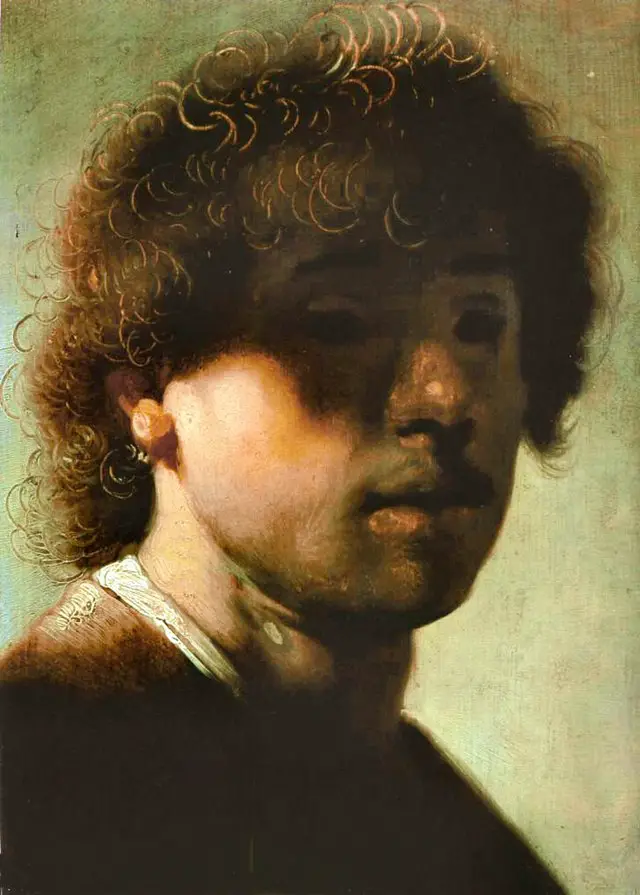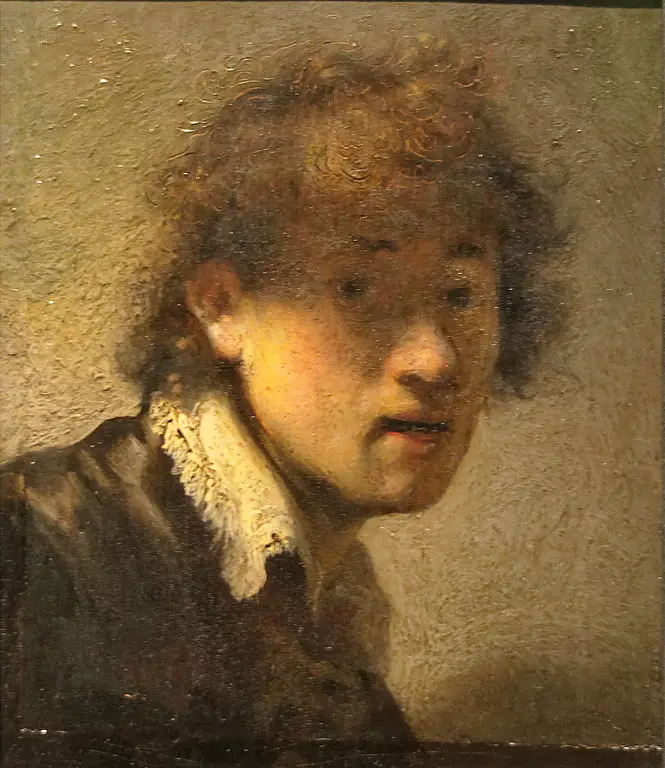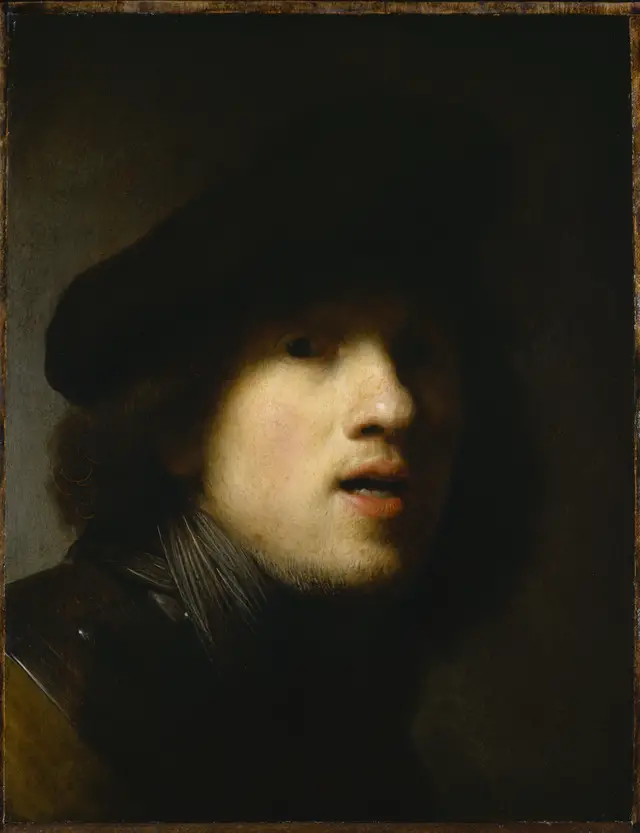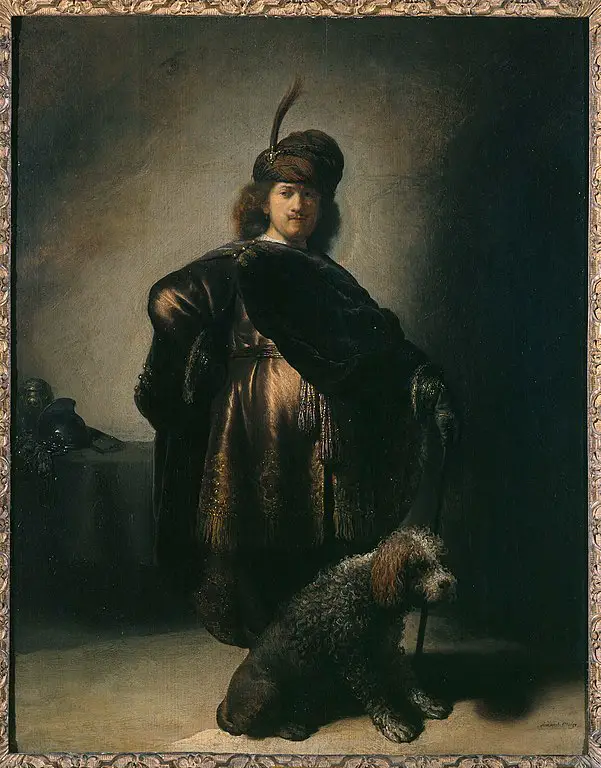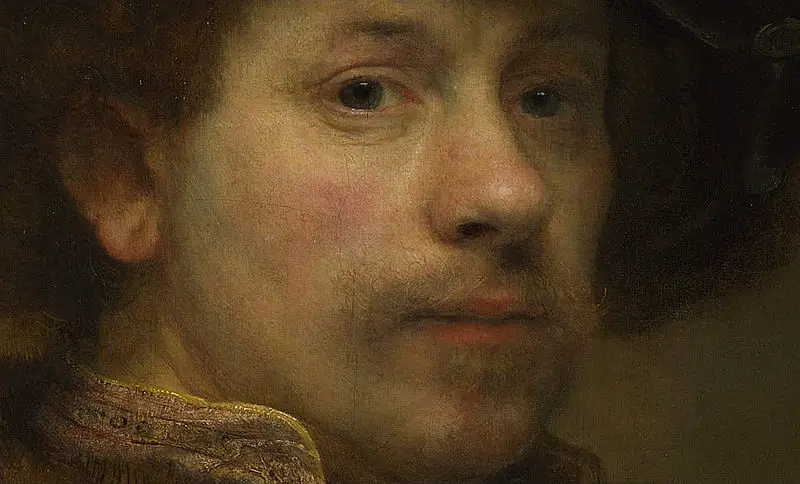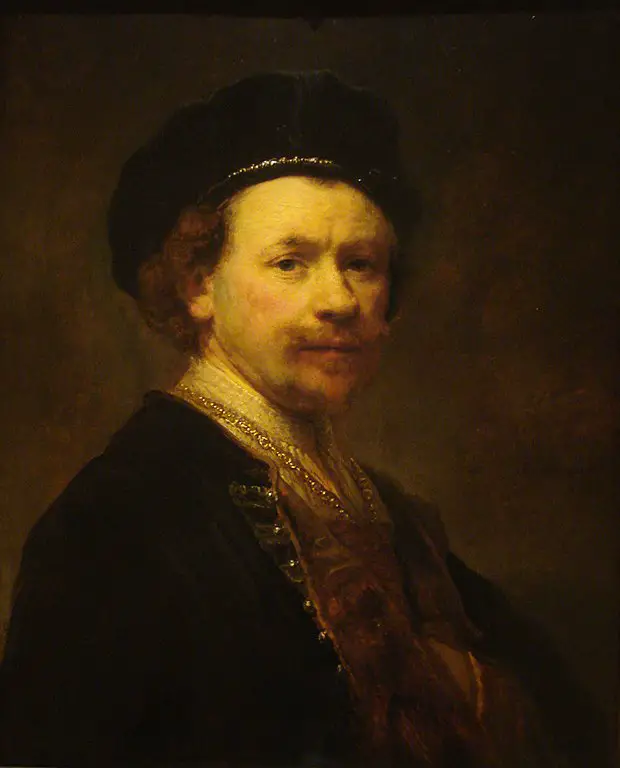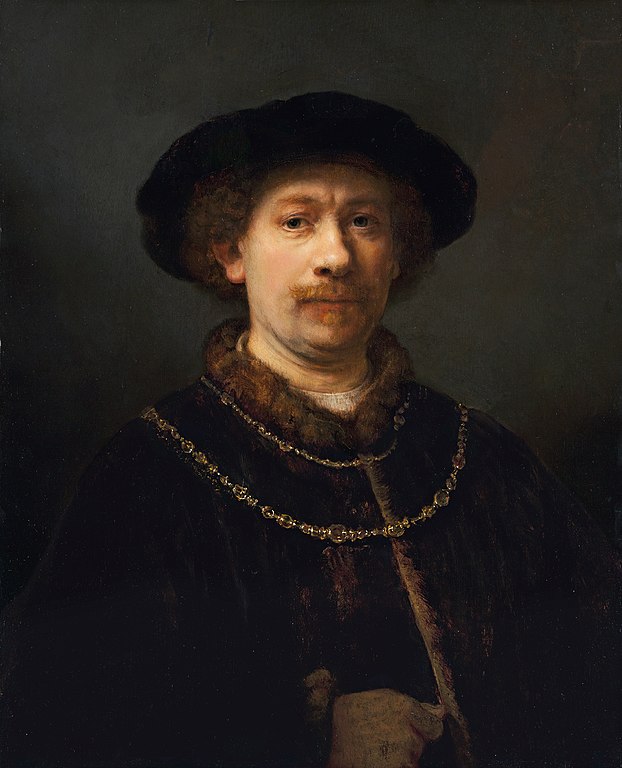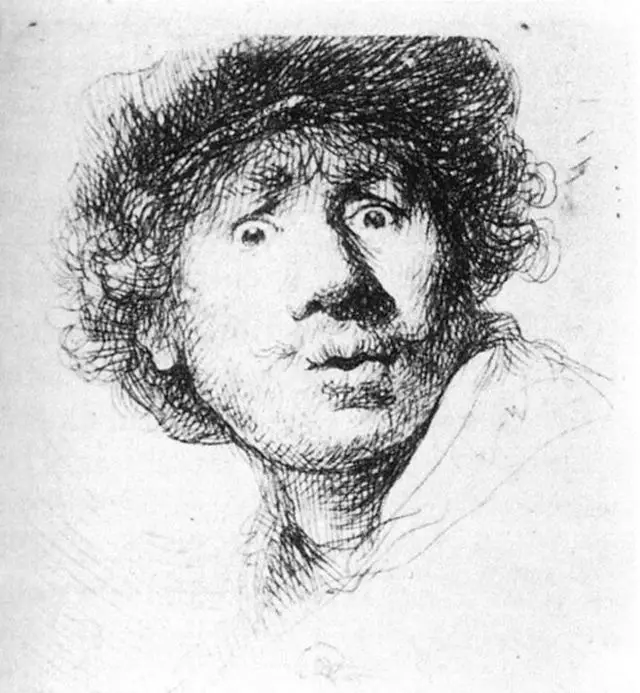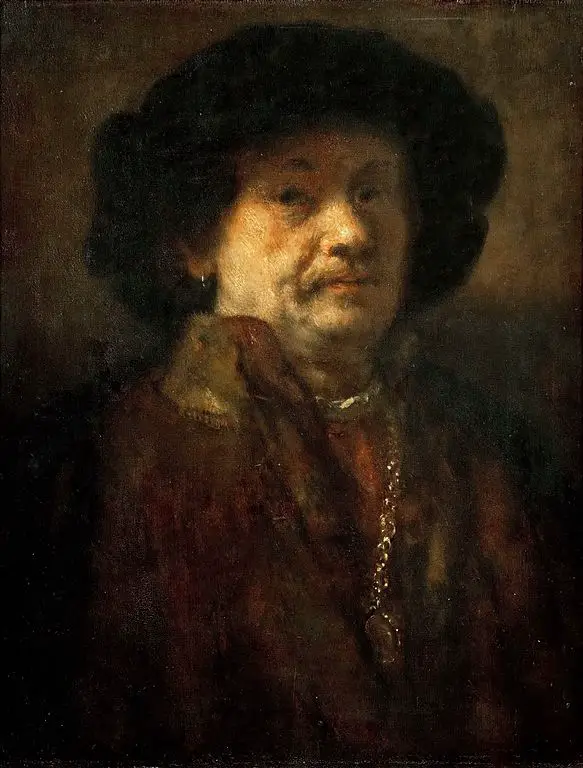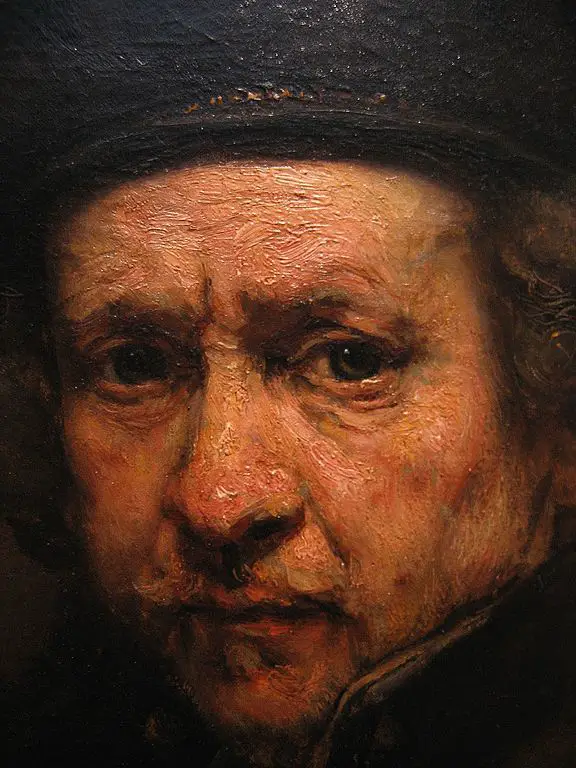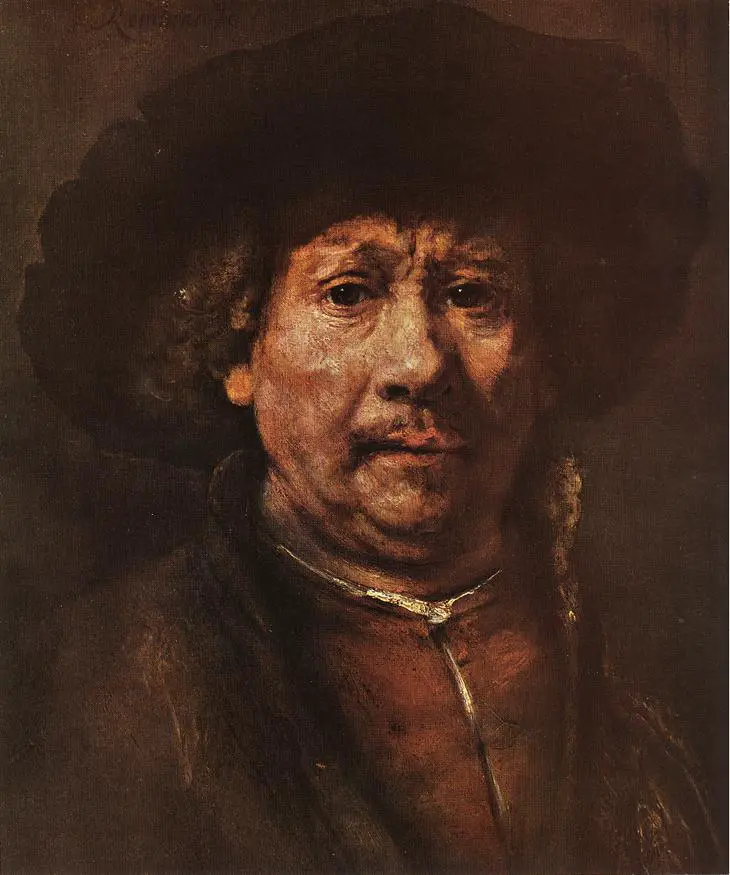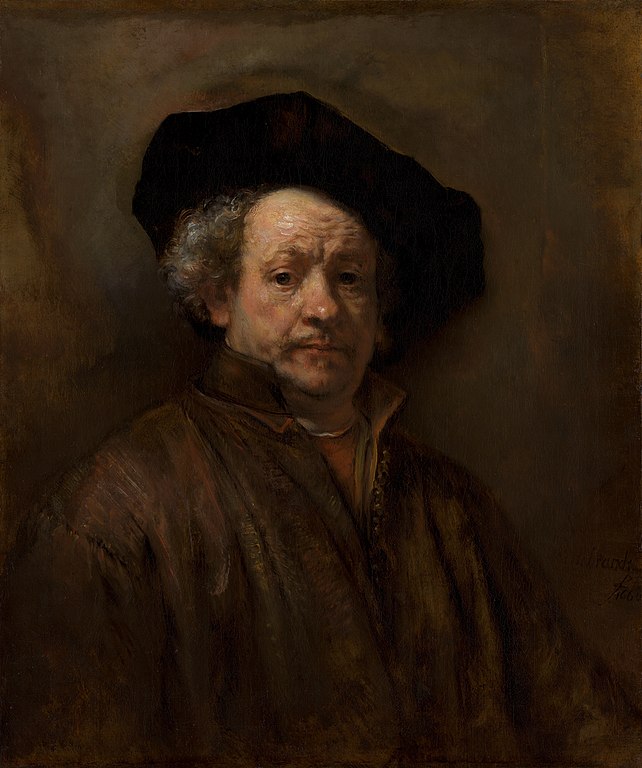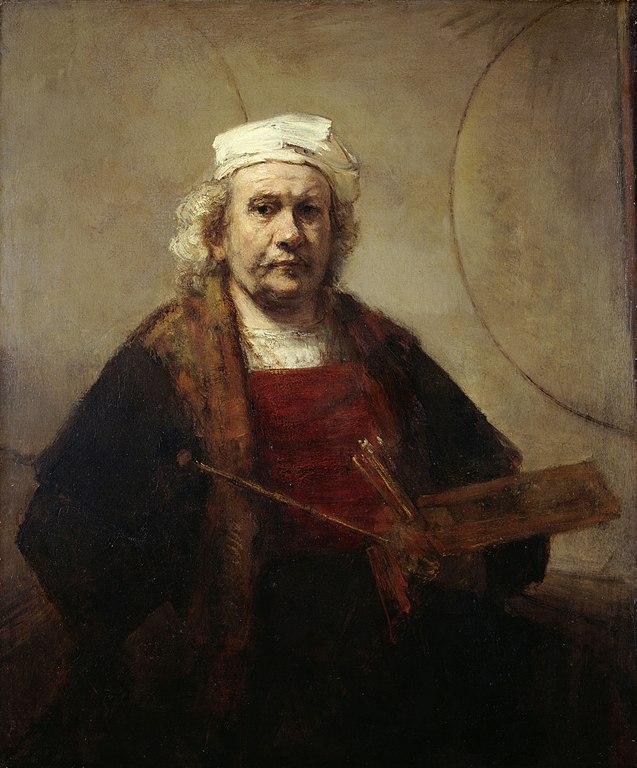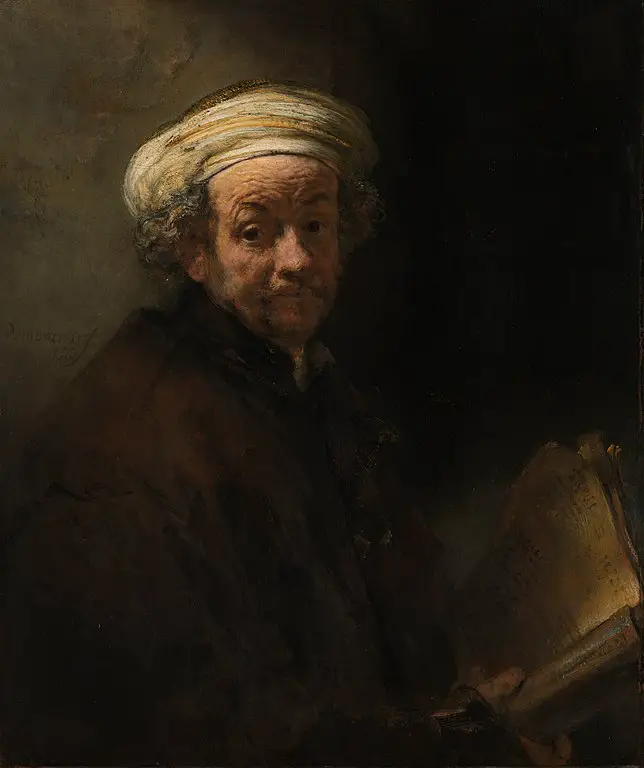Rembrandt’s self-portraits have been fascinating artists for over 400 years. But, what makes Rembrandt’s self-portraits stand out from the rest? What is it about his paintings that have allowed them to endure the test of time?
Self-portraits have been a prominent part of art history for centuries, with many famous artists throughout history choosing to paint themselves.
Among these artists, the Dutch master Rembrandt Harmenszoon van Rijn, stands out as one of the most prolific and masterful self-portraitists of all time. Rembrandt’s self-portraits are not just art selfies – they are deeply personal and profound expressions of his life, emotional intensity, and artistic mastery.
Where It All Began For Rembrandt
Everyone agrees that Rembrandt Harmenszoon van Rijn is among the top artists of all time. He was born in 1606 in Leiden, the Netherlands. During the 17th century, the country was economically prosperous and was a major center of global trade.
The Dutch Golden Age is when the arts began to flourish. Famous painters like Rembrandt, Vermeer, and Hals made some of their most famous works during this time.
Rembrandt painted numerous portraits, landscapes, and biblical subjects throughout the course of his life. Most notably, he was recognized for his skill in depicting emotion through his work.
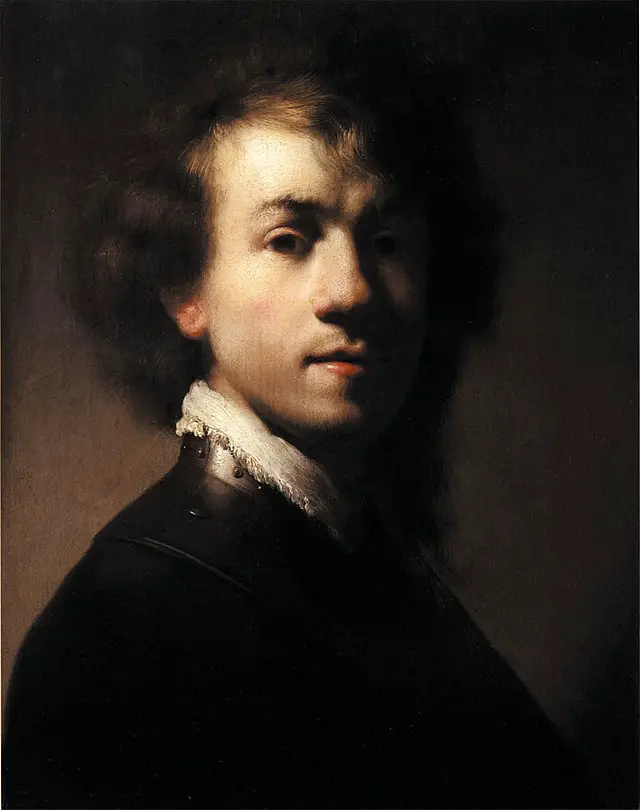
Rembrandt with Gorget, workshop of Rembrandt, c. 1629, Mauritshuis, The Hague. For many years, scholars believed that this painting was a self-portrait of Rembrandt at 23 years of age. However, careful research revealed that it is a very good copy of one of Rembrandt’s self-portraits made by one of his students. The original painting is in Nuremberg.
Early Influences
From his schooling, Rembrandt’s style was heavily influenced by his introduction to Caravaggio and other Italian Baroque artists. After he started using new methods like chiaroscuro (contrasting light and shadow), his art became more dramatic, making them more emotionally charged.
During his early twenties, Rembrandt had already established himself as a prominent artist in Amsterdam. His reputation as a skilled artist grew, leading to numerous requests for portraits and other works.
Rembrandt’s “Unusual” Self-Portraits
Currently, it is common to see artists using their own likeness as the subject of their work. However, self-portraits were not a typical form of painting in the 17th century – they were actually quite unusual. Portraits during this period were only done for people of means to show off their status and wealth.
Today, people might view Rembrandt’s self-portraits as an artist selfie, an expression of vanity, or an attempt to promote himself. While there was certainly an aspect of self-promotion, there is more to Rembrandt’s self-portraits than meets the eye. Currently, close to 80 self-portrait paintings and drawings have been identified as being done by Rembrandt.
As a collection, these works offer a unique and insightful view into the mind of one of the greatest artists in history. They also are a reflection of Rembrandt’s artistic and personal journey.
The Artistic Genius of Rembrandt’s Self-Portraits
The techniques Rembrandt used in his self-portraits were innovative and departed from the conventional style of portraiture.
While self-portraits were still a relatively new genre in the 17th century, Rembrandt’s groundbreaking approach served to legitimize them.
In addition, the flexibility with which Rembrandt depicted himself in his self-portraits reflected the spirit of his time. The Dutch encouraged artists to experiment with new forms of artistic expression. This was key for Rembrandt, giving him the freedom to explore new artistic territory and develop his artistic genius.
Exploring Life Through Self-Portraits
Rembrandt’s self-portraits also demonstrate exceptional insight and self-awareness that was uncommon in art at the time.
Not only did he paint himself as a self-assured young artist, he also painted himself as an aging man with wrinkles and gray hair. The latter certainly would be no expression of vanity. If Rembrandt were alive today, I’m sure he would not be using filters for his selfies.
Difficulties & Controversy In The 1600’s
Rembrandt was seen as a controversial figure in many ways. He also was a man who dealt with personal tragedy, which was undoubtedly reflected in his work. Below is a breakdown of his challenges and controversies:
Artistic Technique: Rembrandt’s style was considered avant-garde and was different from what Dutch painters did in the 1600s. He used loose brushstrokes and strong contrasts of light and dark, both of which were unusual at the time, to create a sense of depth and mood. Some people thought his style was a little odd, and a few of his peers were not fans at all. (I’m thinking they were a little jealous).
Subject Matter: Rembrandt was known for painting unusual subjects. Instead of the grand historical and religious scenes that were popular at the time, he often chose to show the everyday lives of regular people.
Religious Views: Rembrandt lived in the Netherlands during a time when there was a lot of religious change. He was known for using biblical stories and allegories in his work, but he also often showed religious figures in a more human way, which some people thought was heretical. He even painted his own face into a few of these works.
Tragedy: The loss of his beloved wife, Saskia and three of his four children were among the many tragedies Rembrandt endured throughout his lifetime. These losses were devastating and he never fully recovered from them. If you look closely at his later self-portraits, you can see the loss reflected in his eyes.
Financial Struggles: Rembrandt was known for his extravagant lifestyle, and he lived beyond his means, leading to financial difficulties and eventual bankruptcy in 1656. This was seen as a sign of moral decay by many, who believed that financial prosperity was a reflection of a virtuous life.
Personal Life: Rembrandt’s second wife, Hendrickje Stoffels, was a maid in his household and became his common-law wife after Saskia’s death. This relationship was not approved by the conservative Dutch society, since it was seen as immoral and violated traditional social norms.
The Psychological Insight of Rembrandt’s Self-Portraits
Rembrandt’s self-portraits provide insight to the artist’s mind and heart at various points in his life. His self-portraits progressed as he did as an artist and a person. Rembrandt’s capacity to reflect on and reveal truths about himself through his art evolved over time, allowing us to learn more about the man behind the masterpieces.
His early works are full of young energy and bold brushwork. Conversely, his later works are more introspective and mature – even a bit solemn in nature.
Defying Convention
Rembrandt also questioned the norms of his time in these introspective works. He defied the conventions of Dutch Golden Age self-portraiture by painting portraits of himself that were unfiltered, authentic, and full of emotion. They provide fresh insight into the human condition and invite all of us to examine our own feelings about life and death.
Rembrandt’s emphasis on age and mortality is especially noticeable in his later self-portraits. However, he also paints a spirit of fortitude and acceptance – recognizing the cycle of life and the certainty of its end.
Reflections Of The World Around The Artist
Rembrandt’s self-portraits are not just a representation of his physical appearance, but a reflection of his surroundings. Through his self-portraits, he explored the universal themes of life and death, wealth and poverty, love and loss, and the passage of time.
He was also interested in the relationship between the individual and society, and used his self-portraits to comment on the political and social issues of his day.
Influences on Rembrandt’s art during his life were:
- Theater: Having a passion for the stage, Rembrandt infused several of his paintings with dramatic flourishes. His creative use of chiaroscuro reflects his fascination with the dramatic effects of light and dark.
- Rebellion: Even though Rembrandt was a committed Protestant, he frequently dealt with controversial topics related to faith in his art. He was criticized for this, which added to his reputation as a controversial artist.
- Science: Rembrandt’s passion for science stems from his dual nature as an artist and scientist. Numerous works by him show that he was interested in anatomy and the natural sciences. He was also known to do dissections and draw anatomy, which was very unusual for an artist at the time, raising a few eyebrows.
- Artistic Influences: Rembrandt’s artistic influences were diverse and ranged from the work of Caravaggio and Titian to that of his contemporary and close friend Jan Lievens. He also was inspired by the works of Renaissance masters like Raphael and Baroque masters like Michelangelo. It is easy to see these artist’s influences in his work.
- Politics: Rembrandt was a political liberal who opposed the authoritarian control of the Dutch government during his lifetime, despite his religious beliefs. Some of his artworks reflect this political viewpoint by featuring outcasts like street people and prostitutes.
- Technology: Rembrandt’s use of mirrors in his self-portraits allowed him to capture unique angles and play with reflections, allowing him to play with the effects of light and shadow in innovative ways. Many of his self-portraits showcase his mastery of this technique.
What Can Artists Today Learn From Rembrandt’s Self Portraits?
Rembrandt’s self-portraits have a lot to teach artists today, both in terms of how to paint and how to think about art. I see many artists on Instagram using the techniques of Rembrandt in their own work. I’m sure he would be amazed by how many artists he has inspired over the last 400 years.
Key Lessons To Learn From Rembrandt’s Self-Portraits:
- Experiment: Rembrandt’s self-portraits show that he was fearless when it came to trying out new techniques. He was always pushing the limits of what was possible in his art. Also, instead of getting stuck in a rut, he tried out different poses, costumes and expressions.
- Be Authentic: Rembrandt’s self-portraits stand out because they are real and tell the truth. He wasn’t afraid to show himself as he really was. The same certainly cannot be said of “selfies” today.
- Amplify Emotion: Rembrandt’s masterful use of light and shadow resulted in self-portraits that were not only striking to look at, but also displayed powerful emotional depth. His use of contrast to amplify emotion is one of the most powerful lessons artists can use today in their own work.
- Pay Attention to Detail: Rembrandt was known for his ability to capture the subtle nuances of the human face. Artists can use this technique by studying the details of their own facial features and expressions and trying to replicate them in their self-portrait.
- Use Symbolism: Rembrandt often included symbols and allegorical elements in his self-portraits. Artists can use symbolism to add depth and meaning to their self-portrait, for example, using props or background elements to represent different aspects of their own character or experiences.
3 Reasons Why Artists Should Paint Self-Portraits
First, it helps the artist learn more about themselves. By painting a self-portrait, an artist can explore their appearance, emotions, and personality. This self-awareness undoubtedly will be mirrored in other artistic creations.
Second, artists can improve their technical skills. Whether it’s of yourself or someone else, making a portrait is challenging and requires a lot of skill and accuracy. By painting a self-portrait, an artist can improve their ability to show facial features and expressions as well as their understanding of lighting and shading.
Third, a self-portrait can be a compelling way for an artist to express who they are. It enables the artist to show what they think and feel deep down. This can be especially helpful for artists who may have trouble finding other ways to express themselves.
BONUS: no modeling fees. Let’s face it, hiring models or taking photographs suitable for portrait painting can be expensive and time consuming. If artists have a mirror and a single source of light, then they are all set to start painting.
Rembrandt’s Self-Portraits – A Living Legacy
After 400 years, both the art world and popular culture continue to be influenced by Rembrandt’s self-portraits.
He used the medium to explore his own identity and emotions, creating works that convey a profound sense of introspection and humanity.
In addition to having a long-lasting effect on the evolution of the self-portrait genre, his work is also widely researched and admired by art enthusiasts, museum visitors, and private collectors every day.
Thanks For Stopping By The Online Studio
If you enjoyed reading about Rembrandt and would like to learn more about how to paint a portrait yourself, check out these articles:
How To Paint A Realistic Portrait – Avoid These 11 Mistakes!
How To Paint A Digital Portrait – Step-By-Step With Pictures
Learning How To Do Fine Art Painting Using Procreate And ArtRage


